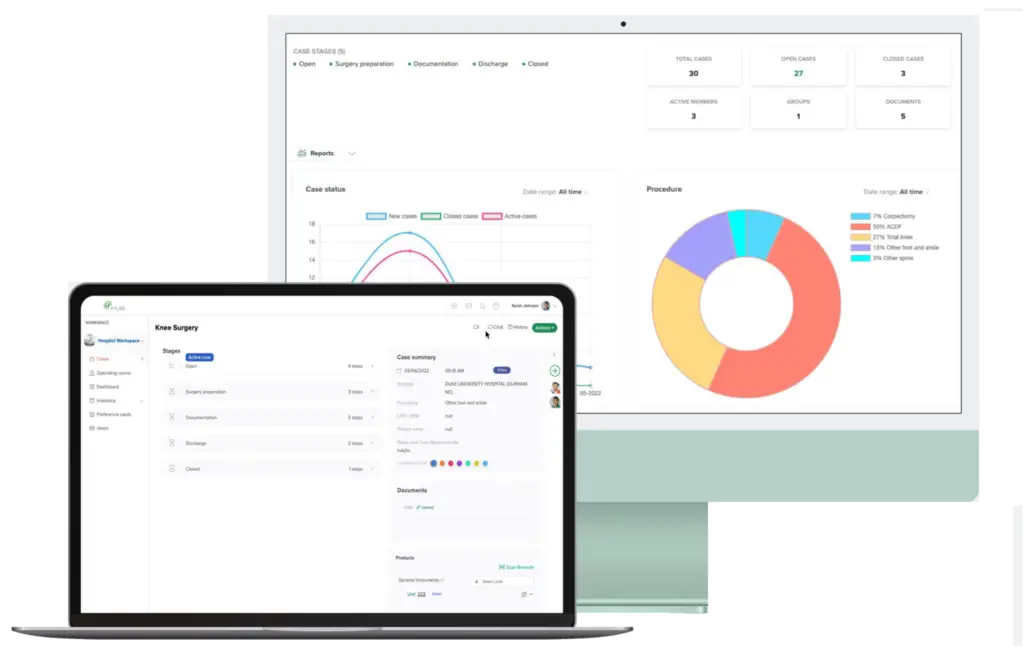The healthcare industry is undergoing a significant transformation, with the “Hospital at Home” model emerging as a pivotal innovation. This approach allows patients to receive high-quality medical care in the comfort of their own homes, significantly enhancing patient experience and reducing healthcare costs. In this post, we will delve into the various aspects of the Hospital at Home program, including its benefits, guidelines, reimbursement policies, and key players in the field.
What is Hospital at Home?
Hospital at Home is a program designed to provide acute, hospital-level care to patients in their homes. This model includes a range of services such as medical treatments, monitoring, and rehabilitation, which are typically delivered in a hospital setting. By shifting the location of care, Hospital at Home programs aim to improve patient outcomes, enhance satisfaction, and reduce the strain on healthcare facilities.
Key Components of Hospital at Home Programs
Hospital at Home Companies
Several companies have emerged as leaders in the Hospital at Home space, offering innovative solutions to implement and manage these programs. These companies provide technology platforms, clinical support, and logistics to ensure seamless delivery of care. Prominent hospital at home companies include Medically Home, DispatchHealth, and Contessa Health.
Hospital at Home Guidelines
To ensure the safety and efficacy of Hospital at Home programs, various guidelines have been established. These guidelines cover aspects such as patient selection criteria, clinical protocols, and quality assurance measures. Adhering to these guidelines is crucial for the successful implementation and operation of Hospital at Home programs.
Hospital at Home Reimbursement
Reimbursement policies play a vital role in the adoption and sustainability of Hospital at Home programs. Healthcare providers can receive reimbursement for services provided under these programs through Medicare, Medicaid, and private insurers. Understanding hospital at home reimbursement policies is essential for providers to ensure financial viability and compliance with regulatory requirements.
Benefits of Hospital at Home Programs
Improved Patient Outcomes
Hospital at Home programs have been shown to improve patient outcomes by reducing hospital-acquired infections, shortening recovery times, and enhancing patient comfort. Patients receiving care at home are more likely to adhere to treatment plans and experience better overall health.
Cost Savings
One of the most significant advantages of Hospital at Home programs is cost savings. By avoiding hospital stays, healthcare providers can reduce expenses related to inpatient care, such as room and board, and associated administrative costs. These savings are often passed on to patients and payers, making healthcare more affordable.
Enhanced Patient Experience
Receiving care at home provides patients with a familiar and comfortable environment, leading to higher satisfaction levels. Patients can remain close to their families and avoid the stress and discomfort associated with hospital stays.
Challenges and Considerations
Hospital at Home Waiver
Implementing Hospital at Home programs may require regulatory waivers, particularly concerning Medicare and Medicaid policies. A hospital at home waiver allows healthcare providers to deliver hospital-level care in a home setting while maintaining compliance with federal and state regulations. Securing these waivers is critical for the expansion of Hospital at Home programs.
Hospital at Home Billing Guidelines
Accurate and efficient billing is essential for the success of Hospital at Home programs. Hospital at home billing guidelines help providers navigate the complexities of coding, documentation, and reimbursement. Adhering to these guidelines ensures that providers receive appropriate compensation for their services.
Future of Hospital at Home
Hospital at Home Model
The Hospital at Home model is poised for significant growth as healthcare systems seek innovative solutions to improve care delivery. This model is expected to expand, incorporating advanced technologies such as telemedicine, remote monitoring, and artificial intelligence to enhance care coordination and patient outcomes.
Hospital at Home Conference 2024
The upcoming Hospital at Home Conference 2024 will be a pivotal event for healthcare professionals, policymakers, and industry leaders. This conference will provide a platform for sharing best practices, discussing emerging trends, and exploring the future of Hospital at Home programs. Attendees can expect to gain valuable insights and network with key stakeholders in the field.
Conclusion
Hospital at Home programs represent a transformative approach to healthcare delivery, offering numerous benefits for patients, providers, and payers. By embracing this model, the healthcare industry can achieve improved patient outcomes, cost savings, and enhanced patient satisfaction. As the Hospital at Home model continues to evolve, it is essential for healthcare providers to stay informed about guidelines, reimbursement policies, and best practices to ensure successful implementation and operation.
How HUB Healthcare Can Help
HUB Healthcare offers a comprehensive solution designed to enhance communication in healthcare, streamline care coordination, and improve overall workflow efficiency. Our platform includes features such as medical case management software, healthcare document management, and healthcare analytics to ensure that all aspects of patient care are optimized. By leveraging HUB Healthcare’s robust tools, organizations can reduce workflow bottlenecks, automate repetitive tasks, and facilitate better collaboration among healthcare providers. This not only improves work quality but also enhances patient outcomes, making HUB Healthcare an essential partner in achieving healthcare excellence. HUB Forum







